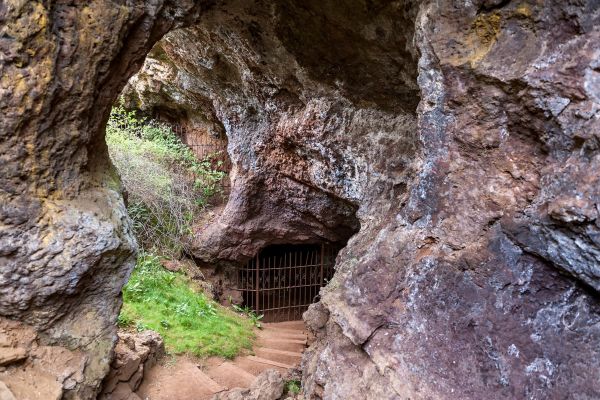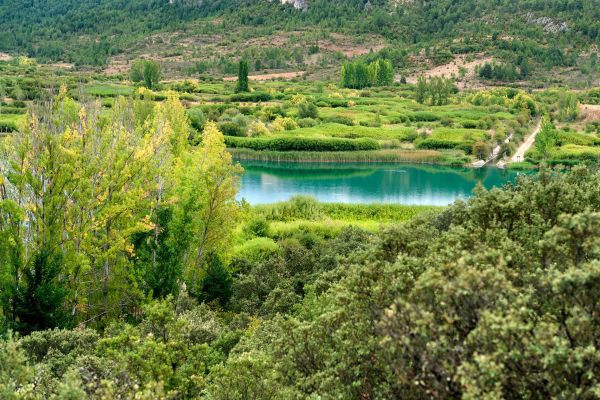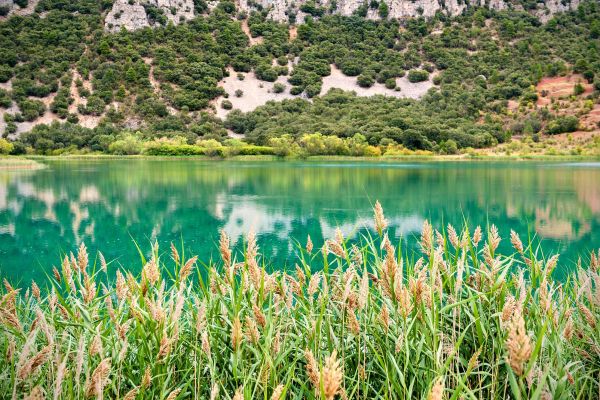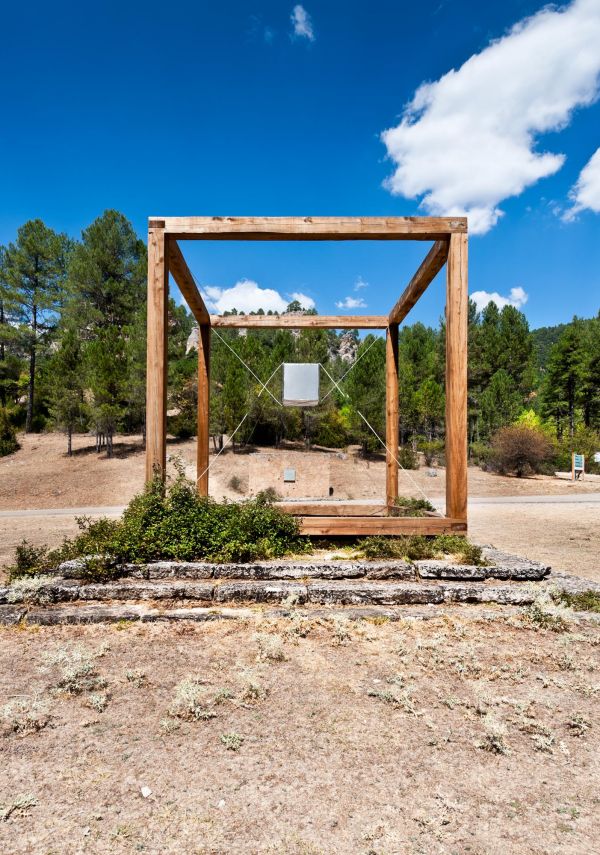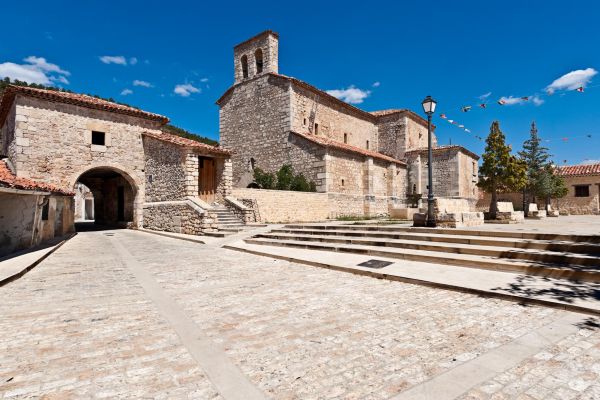Between lakes and sinkholes
Cuenca
Arriving in Poyatos via the Escabas river is a delight for any nature lover. The gorges chiselled by crystalline waters that can (in part) be visited on foot and in summer, some areas allow for a refreshing dip.
Poyatos is nestled atop a hill located in the Majadas mountains. It has a rich heritage with the noteworthy walled complex surrounding the church. Its Council Arch separates the temple zone from the civil complex of the council. The childhood home of the Bishop Don Miguel and the Corral de la Mesta home are highlights in the village. The beautiful, single-span medieval bridge on the Tejadillo road takes us away towards nearby spots, and reveals land with traces dating back to the 13th century.
In the natural environment, we come across Tejadillos, a mountain refuge for resting after a long walk, the Hoz de Poyatos with stunning waterfalls and the beautiful setting of Lagunillos.
Our journey continues north and we cross the Cuervo river just before arriving in Santa María del Val. The town is set in a beautiful spot under some large rocky outcrops and the waters of the Tosca reservoir.
A little further north, we find the Lagunaseca sinkholes, near the town of the same name, giant depressions in the land, between 30 and 500 metres in diameter, which seem to have been formed by huge, falling meteorites. However, they were actually created by the erosion of water and the wind, creating a karst landscape perfect for hiking and geology aficionados, with sinkholes, channels and karst poljes.
A stone’s throw away is the small mountain town of Masegosa where we find the Muela de Pinilla y del Puntal with its picturesque “enchanted city” landscape.
This takes us to the Laguna Grande del Tobar. In summer, take a dip in the deep green waters. We are surrounded by a stunning karst landscape that over the centuries has been created by the action of water on limestone rocks. The bottom of the lake is watertight, which allows water to be retained. The Castilla-La Mancha Nature Reserve, Wildlife Refuge and protected space of the Natura 2000 network, has fresh water at surface level but from 12 metres deep, waters are salt-water, triple that of seawater. The difference in density is such that the two types of water never mix. A very strange phenomenon. A signposted trail allows us to walk around the edge of the lake and enjoy all its delights.
We’ll make the final stop on our trip in the small town of Cueva del Hierro and its Roman mine.
A fantastic plan for enjoying nature and remnants of history in a region with several leisure options for all ages.
May also be of interest to you
Castilla-La Mancha Tourism in 2023. All rights reserved.

 365
365

